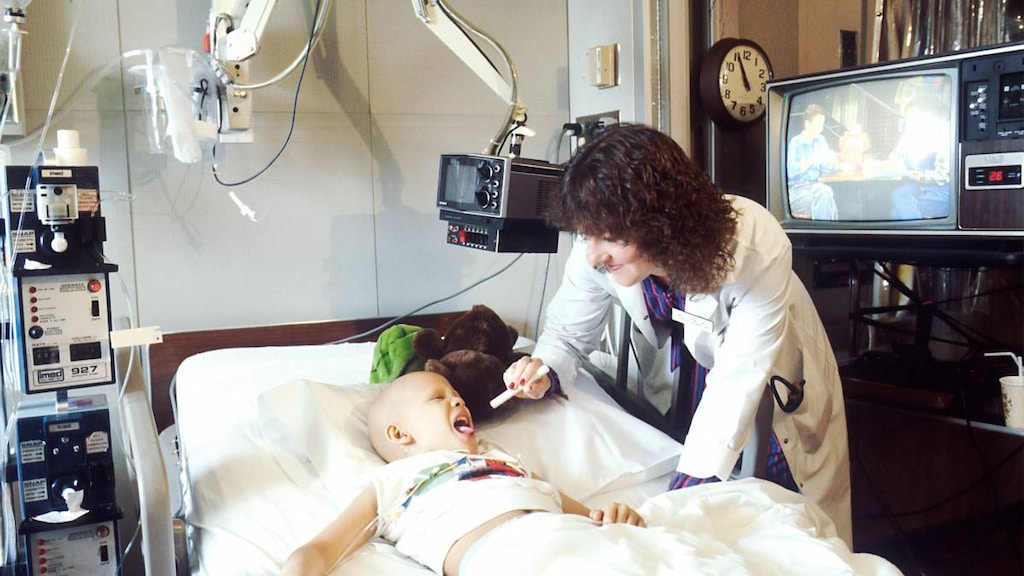Stages of Leukemia: What You Should Know

Someone is diagnosed with blood cancer in the United States every three minutes, and about 176,000 people are diagnosed each year. Leukemia is a type of blood cancer that interferes with the body’s ability to produce normal blood cells. It begins in the bone marrow, where new blood cells are produced, and usually affects the white blood cells.
The National Cancer Institute estimated that 61,780 new leukemia diagnoses were expected in 2019.
During a diagnosis of leukemia, one of the most important determinations a doctor makes is the stage, which describes the degree and seriousness of the cancer. Various staging systems are used for various types of cancer, each assigning a stage number to the cancer. However, three of the four main leukemia types — acute myeloid leukemia (AML), acute lymphocytic leukemia (ALL) and chronic myeloid leukemia (CML) — are not staged using a numbering system. Instead, these forms of leukemia are described as untreated, in remission, relapsed or refractory.
A fourth type of leukemia, chronic lymphocytic leukemia (CLL), is usually staged using one of two systems: the Rai system or the Binet system. For the Rai system, which focuses on the number of red blood cells, platelets and lymphocytes in the blood, the higher the stage number, the more abnormal the distribution of these blood elements and the more serious the cancer. The Binet system focuses more on the white blood cell count and enlarged lymph nodes.
Staging acute lymphocytic leukemia
Acute lymphocytic leukemia (ALL) is most commonly diagnosed in children younger than 10, according to Columbia University Irving Medical Center. The average age of adults diagnosed with ALL is 65.
There is no standard staging system for ALL. Instead, the stages are described based on whether they have been treated, are in remission, have relapsed or are refractory.
- Untreated: This means that the cancer was recently diagnosed and has not been treated. During this stage of ALL, red blood cell, white blood cell and platelet counts are low. Typically, more than 25 percent of the bone marrow cells are what are called blasts (young white blood cells). In addition, untreated ALL is often accompanied by signs and symptoms such as weight loss, fatigue, bleeding, fever or anemia, according to the Canadian Cancer Society.
- Remission: After treatment, ALL may be in remission. Complete remission means that the blood cell counts are normal, fewer than 5 percent of the bone marrow cells are blasts and none of the typical signs and symptoms of ALL are present. Partial remission means that fewer than 25 percent of the bone marrow cells are blasts.
- Relapsed: If ALL is described as relapsed, this means that the cancer has returned after treatment and remission, and more than 25 percent of the bone marrow cells are blasts.
- Refractory: ALL that is refractory has not responded to treatment.
Staging acute myelogenous leukemia
Acute myeloid leukemia (AML) is usually diagnosed in people older than 40; it is far less common in children.
As with ALL, no standard staging system exists for AML. However, there are two classification systems —the French-American-British (FAB) system and the World Health Organization (WHO) system — that your physician may use to determine what subtype of AML you have to help guide treatment. AML, like ALL, is also described based on whether it has been treated, is in remission, has relapsed or is refractory, according to the Canadian Cancer Society.
- Untreated: This description means that the cancer was recently diagnosed and has not been treated. During this stage of AML, a minimum of 20 percent of bone marrow cells are blasts. Typically, signs and symptoms of AML are present during this stage.
- Remission: After treatment, AML may be in remission. Complete remission means that blood cell counts have recovered to a certain extent without a blood transfusion, fewer than 5 percent of the bone marrow cells are blasts and no signs or symptoms of the disease are present. Partial remission from AML means that fewer than 25 percent of the bone marrow cells are blasts.
- Relapsed: AML described as relapsed means that the cancer has returned after treatment and remission, and more than 25 percent of the bone marrow cells are blasts.
- Refractory: If AML is described as refractory, the cancer has not responded to treatment.
Staging chronic myeloid leukemia
Chronic myeloid leukemia (CML) is far more common among adults than children, and more than 50 percent of diagnoses occur in people older than 65.
CML has three phases that are described based on blood cell counts and symptoms: the chronic phase, the accelerated phase and the blast phase, according to the Canadian Cancer Society.
- Chronic phase: Most CML diagnoses occur during the chronic phase. At this point, fewer than 10 percent of blood and bone marrow cells are blasts, no symptoms are present or the symptoms are not severe, the cancer is progressing slowly and the disease is responding to treatment.
- Accelerated phase: During the accelerated phase, 10 to 19 percent of blood and bone marrow cells are blasts, symptoms such as weight loss and fever are present, the spleen is enlarged, a minimum of 20 percent of blood and bone marrow white blood cells are of a type called basophils, the blood platelet count is quite low or quite high and the cancer has not responded to treatment as well as it did in the previous phase.
- Blast phase: Once it has reached the accelerated stage, CML often quickly progresses to the blast phase. During the blast phase, the cancer behaves similarly to acute leukemia. That is, a minimum of 20 percent of blood and bone marrow cells are blasts, and these cells have spread outside the bone marrow. Symptoms arise, such as weight and appetite loss, fever, fatigue and abdominal pain. In addition, bleeding and infection may occur due to irregular platelet and white blood cell counts.
After treatment, CML may be described based on its status:
- Remission: If CML is in remission, blood cell counts are back to normal and remain at this level for a long time.
- Relapsed: CML is described as relapsed if blood and bone marrow blast counts increase after treatment and remission.
- Refractory: If CML is described as refractory, the cancer has not responded to treatment.
Staging chronic lymphocytic leukemia
Chronic lymphocytic leukemia (CLL) primarily affects older adults, with the average age of diagnosis being 72.
Unlike the other types of leukemia, in the United States CLL is staged using the Rai system. The Rai system consists of five stages numbered 0 to 4. The lower the number, the less advanced the leukemia.
- Stage 0: During this stage, white blood cell and lymphocyte counts are high but other blood counts are near normal and no other leukemia symptoms are present. The leukemia is growing at a slow rate, which means that survival rates are higher at this stage, according to the University of Rochester Medical Center.
- Stage 1: During stage 1, the lymphocyte count is high. The lymph nodes are enlarged but other organs are not. Red blood cell and platelet counts are near normal.
- Stage 2: During this stage, lymphocyte counts are high and the spleen is enlarged. In some cases, the liver is enlarged and lymph nodes may be enlarged. Red blood cell and platelet counts are near normal.
- Stage 3: During stage 3 of CLL, lymphocyte counts are high, red blood cell counts are low and platelet counts are near normal. The spleen, liver or lymph nodes may be enlarged.
- Stage 4: During this stage, lymphocyte counts are high, platelet counts are low and red blood cell counts may or may not be low. The spleen, liver or lymph nodes may be enlarged.
In the United Kingdom, Europe and other regions, a different staging system, called the Binet system, is used. This system consists of three stages:
- Stage A: At this stage there is a high white blood cell count and there are less than three groups of enlarged lymph nodes.
- Stage B: There is a high white blood cell count and there are more than three groups of enlarged lymph nodes.
- Stage C: There is a high white blood cell count, a low red blood cell count or platelet count and enlarged lymph nodes or spleen.
Note that under the Binet system, a “group” of lymph nodes refers to lymph nodes in a specific area of the body, such as the neck or underarms. The group encompasses both sides of the body if both sides are affected.
Article references
- Northwestern Medicine, What Are the Stages of Leukemia? https://www.nm.org/conditions-and-care-areas/cancer-care/leukemia-cancer-care/leukemia/stages
- Cancer Research UK, chronic lymphocytic leukaemia (CLL) https://www.cancerresearchuk.org/about-cancer/chronic-lymphocytic-leukaemia-cll/staging
- Canadian Cancer Society, Staging acute lymphocytic leukemia https://www.cancer.ca/en/cancer-information/cancer-type/leukemia-acute-lymphocytic-all/staging/?region=on
- Canadian Cancer Society, Staging acute myelogenous leukemia https://www.cancer.ca/en/cancer-information/cancer-type/leukemia-acute-myelogenous-aml/staging/?region=on
- Canadian Cancer Society, Staging of chronic myelogenous leukemia https://www.cancer.ca/en/cancer-information/cancer-type/leukemia-chronic-myelogenous-cml/staging/?region=on
- University of Rochester Medical Center, Chronic Lymphocytic Leukemia (CLL): Stages https://www.urmc.rochester.edu/encyclopedia/content.aspx?contenttypeid=34&contentid=BCLL05
- Harvard Health Publishing, Leukemia Overview https://www.health.harvard.edu/a_to_z/leukemia-overview-a-to-z
- Leukemia & Lymphoma Society, Facts and Statistics https://www.lls.org/facts-and-statistics/facts-and-statistics-overview
- Columbia University Irving Medical Center, Acute myeloid leukemia (AML) https://cancer.columbia.edu/node/12796
- Columbia University Irving Medical Center, Acute lymphoblastic leukemia (ALL) https://cancer.columbia.edu/leukemia-acute-lymphoblastic-leukemia-all
- Columbia University Irving Medical Center, Chronic myeloid leukemia (CML) https://cancer.columbia.edu/node/12806
- Columbia University Irving Medical Center, Chronic lymphocytic leukemia (CLL) https://cancer.columbia.edu/node/12811
- National Cancer Institute, Cancer Stat Facts, Leukemia https://seer.cancer.gov/statfacts/html/leuks.html


